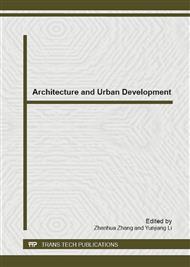p.336
p.341
p.345
p.351
p.356
p.360
p.366
p.370
p.374
Numerical Simulation of Combined Aggregate Concrete Cube Compression Test
Abstract:
By the submicroscopic analysis, the combined aggregate concrete is regarded as a three-phase complex material, composed of light aggregate, common aggregate and mortar. APDL program is developed to generate two-dimension aggregate structure, the radius and position of aggregate distribute randomly. Using the Boolean operation, the light aggregate, common aggregate and mortar is meshed. On the basis, the loading process of combined aggregate concrete cube is studied. It would provide reference for mechanical property analysis of combined aggregate concrete.
Info:
Periodical:
Pages:
356-359
Citation:
Online since:
November 2012
Authors:
Price:
Сopyright:
© 2012 Trans Tech Publications Ltd. All Rights Reserved
Share:
Citation:


